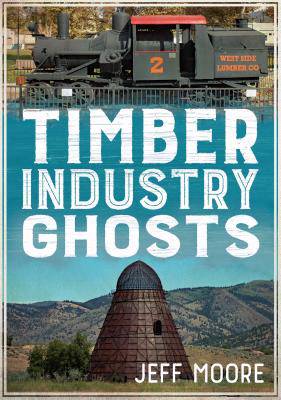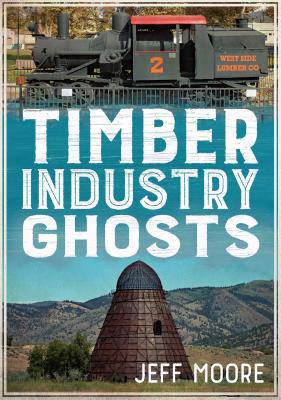
- Afhalen na 1 uur in een winkel met voorraad
- Gratis thuislevering in België vanaf € 30
- Ruim aanbod met 7 miljoen producten
- Afhalen na 1 uur in een winkel met voorraad
- Gratis thuislevering in België vanaf € 30
- Ruim aanbod met 7 miljoen producten
Zoeken
Omschrijving
Explores remnants of the Pacific Coast timber industry, highlighting its historical impact and transformation.
Timber has always been one of the principle industries in the United States. The tasks and technologies associated with logging trees, hauling them to sawmills and other forest product plants, processing them into useable products, and then moving those to market always have left substantial marks on both history and the landscape. Yet the industry has never been static, and changing economics, technologies, social pressures, and other forces have left many traces of the past as the new replaced the old, as plants opened and closed, and as values and philosophies shifted. The ghosts of the timber industry come in many forms, such as abandoned sawmill sites, stumps in the forest, static displays in city parks and museums, tourist attractions, and geographic place names. Taken together, they tell the story of a way of life that, while it continues today, has radically changed from the old ways. This book seeks to present a few snapshot views of some of these remnants in the Pacific Coast states, explaining their role both in history and in the present.
Timber has always been one of the principle industries in the United States. The tasks and technologies associated with logging trees, hauling them to sawmills and other forest product plants, processing them into useable products, and then moving those to market always have left substantial marks on both history and the landscape. Yet the industry has never been static, and changing economics, technologies, social pressures, and other forces have left many traces of the past as the new replaced the old, as plants opened and closed, and as values and philosophies shifted. The ghosts of the timber industry come in many forms, such as abandoned sawmill sites, stumps in the forest, static displays in city parks and museums, tourist attractions, and geographic place names. Taken together, they tell the story of a way of life that, while it continues today, has radically changed from the old ways. This book seeks to present a few snapshot views of some of these remnants in the Pacific Coast states, explaining their role both in history and in the present.
Specificaties
Betrokkenen
- Auteur(s):
- Uitgeverij:
Inhoud
- Aantal bladzijden:
- 160
- Taal:
- Engels
- Reeks:
Eigenschappen
- Productcode (EAN):
- 9781634991384
- Verschijningsdatum:
- 29/07/2019
- Uitvoering:
- Paperback
- Formaat:
- Trade paperback (VS)
- Afmetingen:
- 163 mm x 231 mm
- Gewicht:
- 476 g

Alleen bij Standaard Boekhandel
+ 81 punten op je klantenkaart van Standaard Boekhandel
Beoordelingen
We publiceren alleen reviews die voldoen aan de voorwaarden voor reviews. Bekijk onze voorwaarden voor reviews.








